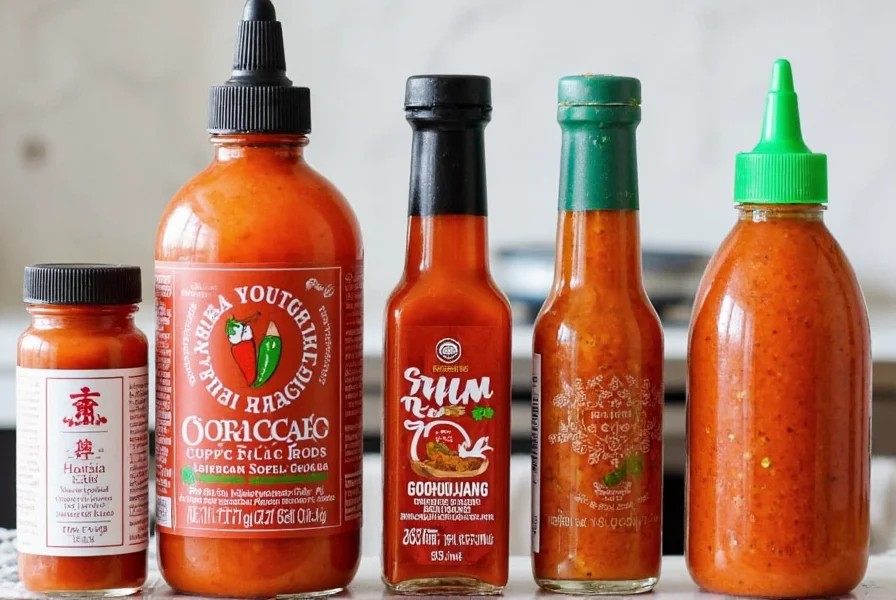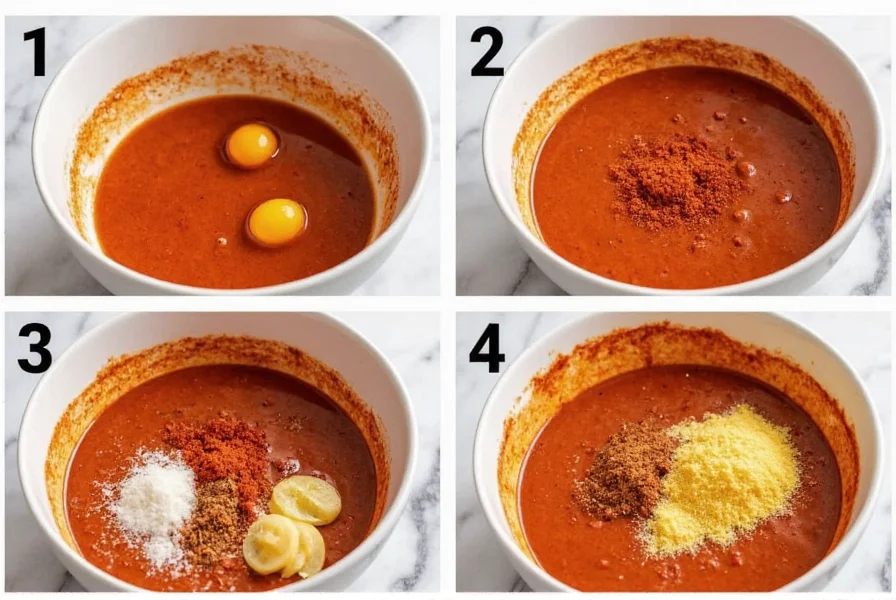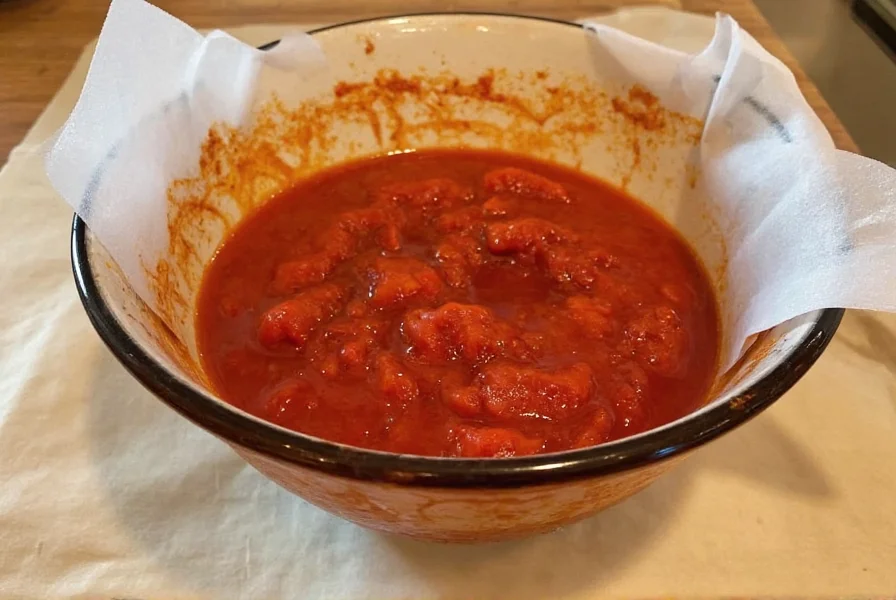The best substitutes for chili paste include sriracha for heat with garlic notes, gochujang for Korean-style recipes, harissa for North African dishes, and a homemade blend of red pepper flakes, garlic, and tomato paste for general cooking. For mild alternatives, try paprika mixed with vinegar or ketchup with cayenne pepper. The ideal replacement depends on your specific recipe's required heat level, flavor profile, and regional cuisine.
When you're in the middle of cooking and realize you've run out of chili paste, knowing reliable substitutes can save your recipe. Chili paste comes in many varieties across global cuisines, each with unique flavor profiles that affect which substitute works best for your specific dish. Understanding these differences ensures your culinary creation maintains its intended character while accommodating ingredient availability.
Understanding Chili Paste Varieties
Chili paste isn't a single standardized product but rather a category of condiments varying significantly by region and recipe. Common types include:
- Sambal oelek (Indonesian) - pure chili peppers, vinegar, and salt with no garlic
- Chili garlic sauce - similar to sambal but with added garlic
- Gochujang (Korean) - fermented chili paste with sweet, savory, and umami notes
- Sriracha - thinner consistency with garlic and vinegar notes
- Harissa (North African) - includes roasted red peppers and spices like cumin
Each variety brings different heat levels, textures, and flavor components to dishes, which is why the best substitute depends on which specific chili paste your recipe requires.

Best Substitutes by Recipe Type
Not all chili paste alternatives work equally well across different cuisines. Consider these targeted substitutions:
| Recipe Type | Best Substitute | Ratio | Notes |
|---|---|---|---|
| Asian stir-fries | Sriracha + tomato paste | 1:1 | Add 1 tsp rice vinegar for authenticity |
| Korean dishes | Gochujang alternative | 1:1 | Mix 2 tbsp ketchup, 1 tbsp soy sauce, 1 tsp red pepper flakes |
| Mexican recipes | Chipotle in adobo | 1:1 | Blend with 1 tsp vinegar for thinner consistency |
| Thai cooking | Red curry paste | 1:1 | Use half amount as it's more potent |
| Mild dishes | Paprika + vinegar | 1 tbsp:1 tsp | Add garlic powder for depth |
Detailed Substitution Guide
For precise replacements when you need a substitute for chili paste in specific cooking scenarios:
For Heat Without Complex Flavors
When your recipe primarily needs heat rather than specific flavor notes, these options work well:
- Red pepper flakes - Use 1 teaspoon flakes per tablespoon of chili paste, mixed with 1 teaspoon water or oil
- Cayenne pepper - Start with 1/4 teaspoon per tablespoon of chili paste, adjusting to taste
- Hot sauce - Tabasco or similar vinegar-based hot sauces work at 1:1 ratio but add liquid
For Authentic Asian Flavor Profiles
Asian recipes often rely on specific chili paste characteristics. Try these targeted alternatives:
- For sambal oelek - Combine 2 tablespoons tomato paste with 1 teaspoon red pepper flakes and 1/2 teaspoon vinegar
- For chili garlic sauce - Mix 2 tablespoons mayonnaise with 1 teaspoon minced garlic and 1/2 teaspoon cayenne
- For gochujang - Blend 2 tablespoons ketchup, 1 tablespoon soy sauce, 1 teaspoon honey, and 1/2 teaspoon red pepper flakes
Homemade All-Purpose Substitute
When you need a versatile chili paste replacement that works across multiple cuisines, prepare this simple mixture:
- Combine 3 tablespoons tomato paste
- Add 1 tablespoon red pepper flakes
- Mix in 2 minced garlic cloves
- Stir in 1 teaspoon rice vinegar or apple cider vinegar
- Add 1/2 teaspoon sugar to balance acidity
- Thin with water as needed to reach desired consistency
This blend works particularly well as a substitute for chili paste in stir fry recipes while maintaining authentic flavor notes. Store any leftovers in an airtight container in the refrigerator for up to two weeks.

When Substitutions Won't Work
While most recipes tolerate chili paste substitutions, certain dishes rely on specific paste characteristics that are difficult to replicate:
- Fermented dishes - Gochujang's fermentation process creates unique umami notes hard to mimic
- Traditional Korean stews - Where gochujang provides both heat and thickening properties
- Authentic Indonesian sambals - Where fresh chili texture is integral to the dish
In these cases, consider modifying your recipe rather than forcing a substitution that might compromise the dish's integrity. Sometimes a recipe adjustment creates a new variation rather than a poor imitation.
Storage Tips for Substitutes
Unlike commercial chili paste which often contains preservatives, homemade substitutes have shorter shelf lives:
- Refrigerate all homemade chili paste alternatives
- Use within 7-10 days for best flavor
- Store in glass containers rather than plastic to prevent flavor absorption
- Always use clean utensils to prevent contamination
Commercial alternatives like sriracha or harissa maintain their quality for months after opening when properly refrigerated, making them practical pantry staples for unexpected substitution needs.
Final Considerations
The perfect substitute for chili paste depends on your specific culinary context. Consider these factors when choosing your replacement:
- The primary role of chili paste in your recipe (heat source vs flavor component)
- Other ingredients that might complement or compensate for substitution differences
- Your personal heat tolerance and flavor preferences
- Regional authenticity requirements for the dish
Remember that cooking is both science and art—sometimes an imperfect substitute creates a delicious new variation rather than a disappointing imitation. The best approach is understanding why chili paste matters in your specific recipe, then selecting a substitute that addresses those key requirements.











 浙公网安备
33010002000092号
浙公网安备
33010002000092号 浙B2-20120091-4
浙B2-20120091-4